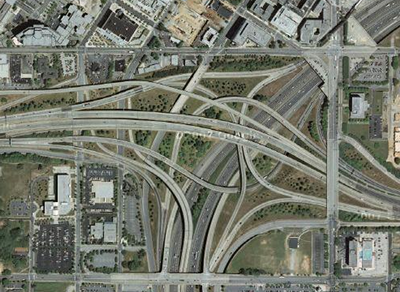Our series returns to the west coast, and to a state I know from personal experience. I have traveled through the western part of Oregon multiple times. It is a state that at first glance has much in common with northern California, politically and geographically, but has its own unique characteristics.
 Traveling north on I-5, one crosses an arbitrary line the separates the spectacular landscape of far-northern California from the spectacular landscape of southwestern Oregon. The highway weaves through the mountains and valleys of the Cascade Range, including numerous volcanic (or formerly volcanic) peaks.
Traveling north on I-5, one crosses an arbitrary line the separates the spectacular landscape of far-northern California from the spectacular landscape of southwestern Oregon. The highway weaves through the mountains and valleys of the Cascade Range, including numerous volcanic (or formerly volcanic) peaks.

 At the town of Medford, one can continue north, or take a detour east on state highway 62 to Crater Lake. Crater Lake fills a caldera in the Cascade Range, and is the deepest lake the United States. It's circular shape is quite distinctive, as are its internal landmarks, including Wizard Island (the pointy island to one side of the lake), the “Old Man of the Lake“, and several volcanic formations. I had the opportunity to visit Crater Lake many years ago.
At the town of Medford, one can continue north, or take a detour east on state highway 62 to Crater Lake. Crater Lake fills a caldera in the Cascade Range, and is the deepest lake the United States. It's circular shape is quite distinctive, as are its internal landmarks, including Wizard Island (the pointy island to one side of the lake), the “Old Man of the Lake“, and several volcanic formations. I had the opportunity to visit Crater Lake many years ago.
More recently, I traveled the other route from Medford, on I-5 north to Portland, while I was on tour last October.
We experienced Portland's famously variable weather. Fortunately, many of the city's attractions are indoors. This includes Powell's Books. I could have spent the whole day in the Pearl Room, which contained the art and architecture offerings, as well as their extensive rare book collection.
Portland also has abundant public art. Across from Powell's is this “brush,” a noted landmark:

[Click to enlarge]
This building brings to mind the city's nickname, Rose City.

[Click to enlarge]
These are only a few of the photos I took while on tour. Please visit the original article for more images, including the intriguing “recursive elephant” sculpture (and the hidden cat).
Portland is someplace I could see living, and indeed the idea crossed my mind during my period of unemployment last year. Ironically, it was en route to Portland that I took the fateful phone call that led to my current job and new life in San Francisco.
 We also performed in the coastal town of Astoria, which can be reached by traversing the coast range or traveling along the Columbia River on US 30. This is actually the western end of US 30, which starts at a junction with our friend US 101.
We also performed in the coastal town of Astoria, which can be reached by traversing the coast range or traveling along the Columbia River on US 30. This is actually the western end of US 30, which starts at a junction with our friend US 101.

[Click to enlarge]
Astoria was cool and rainy and very green, as one would expect along the northern Pacific coast. The people we met there were also very welcoming to a group of Bay Area musicians playing weird experimental music. Again, you can read more about our visit at the original tour article.
I have never been to the eastern part of Oregon, which is a very different place altogether. I am quite intrigued by the descriptions of part of eastern Oregon as a desert landscape. But it seems like one has to be very motivated to visit, as it is far less populated and less accessible via major highways. The east-west divide also seems to extend to politics, with western Oregon being more liberal in the “northern California” sense, and eastern Oregon being more conservative. I wonder how this divide is going to play, at least in the media, given the patterns of this election…
 The Bay Bridge has been closed over the Labor Day weekend for a major engineering feat. As part of the replacement of the eastern span, engineers actually cut out a small section near Yerba Buena Island, and actually wheeled in a new section of bridge. This allows the old doomed bridge to be used while the new one is connected up to the island.
The Bay Bridge has been closed over the Labor Day weekend for a major engineering feat. As part of the replacement of the eastern span, engineers actually cut out a small section near Yerba Buena Island, and actually wheeled in a new section of bridge. This allows the old doomed bridge to be used while the new one is connected up to the island. 
















 The
The 



 We came into Montana at night on
We came into Montana at night on 

 Our trip back from Montana took us through South Dakota on
Our trip back from Montana took us through South Dakota on  Traveling north on
Traveling north on 
 At the town of Medford, one can continue north, or take a detour east on
At the town of Medford, one can continue north, or take a detour east on 


